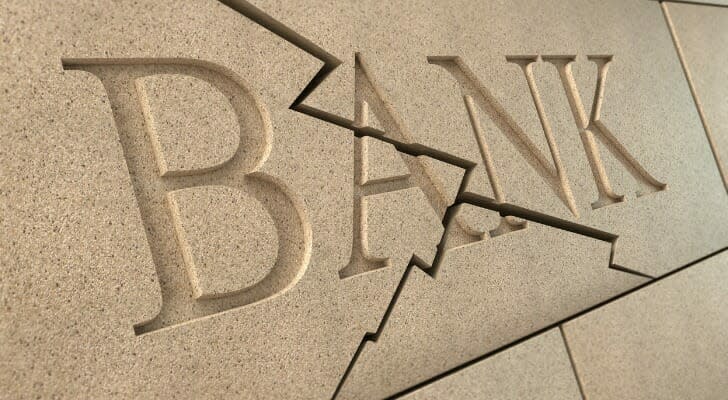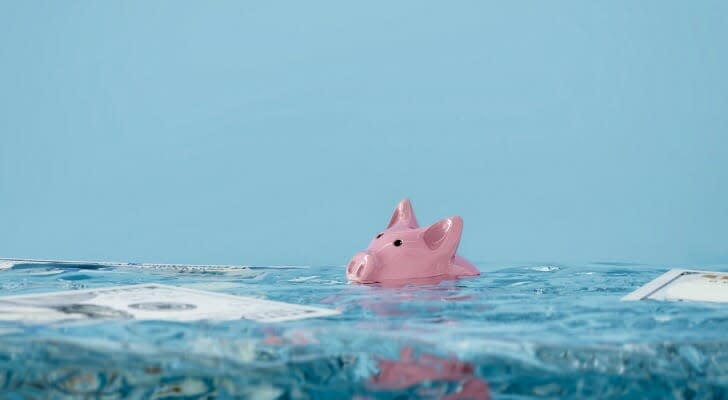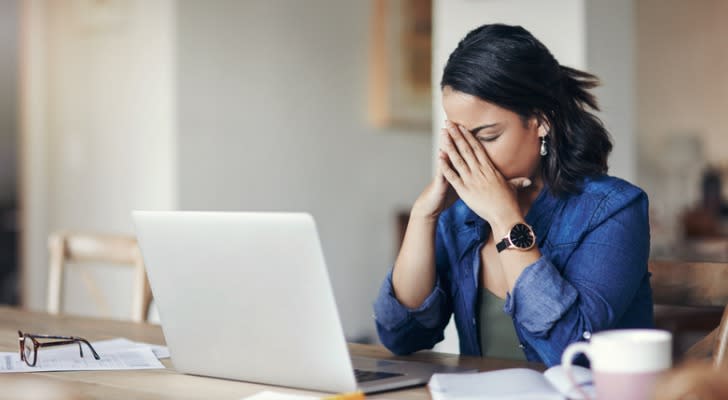In recent months the FDIC has managed two of the largest bank failures in U.S. history. The collapse of Silicon Valley Bank (SVB) and Signature Bank happened shockingly fast. And First Republic wasn’t far behind.Consumers have plenty of questions, as the banking sector looks shakier than at any point since the 2008 recession. But perhaps the biggest is also the most basic: is my money safe?The good news is, yes. The federal government acts to protect bank deposits in a number of ways. The two most important, and effective, are insurance and liquidity.
Are you looking for a strong savings rate? Check out SmartAsset's high-yield savings account comparison tool.The Federal Government Insures Deposits
The most direct way that the government acts is through depository insurance. For banks, this is managed by the FDIC (Federal Deposit Insurance Corporation). For credit unions, which operate similarly to banks, deposit insurance is managed by the NCUA (the “National Credit Union Administration”).
In both cases, the government insures each depositor at each institution for up to $250,000. This means that if the bank fails and its assets are wiped out, the government will reimburse you for any and all lost money up to $250,000. It periodically updates that amount for inflation.
This rule applies to each depositor, so the government won’t protect multiple accounts at the same bank. However it applies to each institution as well. So if you have three accounts with a single bank, you are only protected up to $250,000. However if you have accounts at three separate banks, your money at each institution is protected up to the limit. There are some instances in which you could have multiple accounts protected at one institution, if they are different types of accounts.
This also applies only to depository institutions, places which offer products like checking and savings accounts. It does not apply to investment banks. The government will reimburse you if your checking account is wiped out, but it won’t make you whole for stock market losses.
The Federal Reserve also has shown willingness to expand its footprint of protection. When Silicon Valley Bank collapsed, the government lifted this $250,000 cap. It guaranteed that it would reimburse all of the money that businesses and individuals had on deposit, including about $18 billion in uninsured cash. It did the same with Signature bank, guaranteeing about $1.6 billion in uninsured assets.
If you’re ready to be matched with local advisors that can help you achieve your financial goals, get started now.
The FDIC and the Federal Reserve Backstop Liquidity
Depository insurance is the guarantee of last resort, and the government uses it very rarely. Before reimbursing consumers the FDIC and the Federal Reserve try to prop up a bank’s liquidity and keep it from failing. They do this in two main ways.
Lender of Last Resort
First, the Federal Reserve acts as a lender of last resort when banks need cash. This is the government’s preferred method of protecting deposits at healthy banks.
One of the major ways that a bank can fail is if too many depositors try to take their money out all at once. The bank might not have enough cash on hand to cover all of these demands, which can force it to sell off assets at a loss or even might bankrupt the institution altogether.
To prevent this, the Federal Reserve extends emergency loans to banks in need of cash. Banks can borrow money from the government to cover their immediate needs and make depositors whole. This is useful to solve cash flow crises, when an otherwise stable institution might be forced into insolvency by a short-term demand for money. The bank takes out a loan to meet its short-term demands and repays that loan with the returns on its long-term investments.
To cover particularly large liquidity issues, the Federal Reserve has recently created the Bank Term Funding Program. This was instituted in the wake of the SVB and Signature collapses, and it will act as a lender of last resort for large institutions.
Broker of Last Resort
As noted above, lending to banks can work well for a healthy institution that has cash flow issues. Any bank, no matter how well-managed, is vulnerable to a bank run and emergency loans can cover that short-term crisis.
Loans will not work for banks that are failing though. While the government will, typically, extend loans to try and shore up an immediate crisis (such as it did in the case of SVB and Signature), that is only a stopgap solution when the bank is going out of business. And that happens more often than most consumers realize. Banks may fail because they made bad investments, because they have lost too many customers or because their underlying business model has gone wrong in some way.
In this case, the Federal Reserve and the FDIC act as a broker of last resort to try and sell the bank to another, healthier institution. Their goal is to find a solvent bank that will take over the failing bank’s deposits and assets, effectively folding one institution into another.
When successful, the FDIC doesn’t need to reimburse depositors at all. Often, from the outside, this looks like a simple merger and individual consumers notice no change except for the name on the door. The new institution takes over the deposits and loans of the old one. This is particularly important because large depositors frequently have more than $250,000 on account with their banks. One estimate by the FDIC suggests that about 43% of all bank deposits are uninsured, so mergers are a critical tool for making sure that depositors are protected against bank failures.
Depositors Are Historically Well-Protected
Banking protections are an incredibly complicated issue, and the government has a wide range of regulatory and financial tools that it uses to protect depositors. For example, the Federal Reserve conducts regular oversight of banks to look for bad investments and risky assets that might cause a failure (although, as the case of SVB made clear, this system is far from foolproof).
The takeaway is this, though: As a depositor, your money is about as safe as it can be. Making sure that depositors feel like their money is secure is a huge priority for the government, and several different agencies and entities work to make sure of that. Banks are monitored to try and prevent failures, and the Federal Reserve acts to give them liquidity quickly and at need. When a bank does fail, the government moves quickly to find a buyer for those assets and deposits. And if all that doesn’t work, it simply cuts a check to reimburse depositors for cash that they’ve lost.
It’s not a perfect system, but depositors haven’t lost money to a bank failure in the United States since the 1930s.
The Bottom Line
Your money is as safe as it can be in the bank. Between depositor insurance, emergency loans and bank sales, the government works hard to protect what you have.
Banking Tips
In addition to traditional banks, online banks have become a new issue in finance, with many wondering if they are safe for consumers.
A financial advisor can help you plan to keep your money safe.Finding a financial advisor doesn’t have to be hard. SmartAsset’s free tool matches you with up to three vetted financial advisors who serve your area, and you can interview your advisor matches at no cost to decide which one is right for you. If you’re ready to find an advisor who can help you achieve your financial goals, get started now.
Photo credit: ©iStock.com/Henrik5000, ©iStock.com/mphillips007, ©iStock.com/mapodile
The post Is My Money Safe in the Bank? appeared first on SmartAsset Blog.


